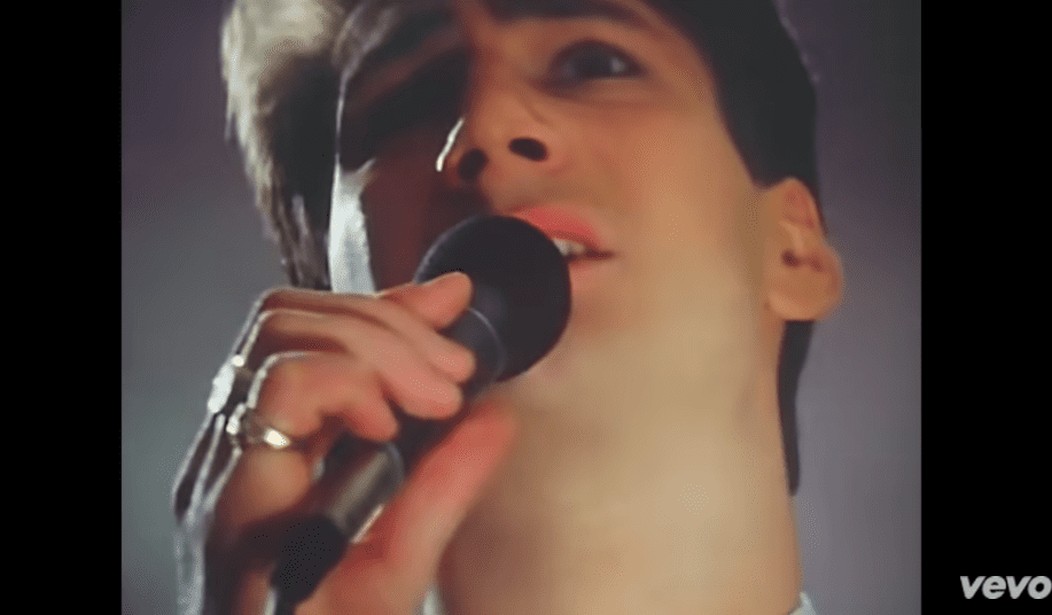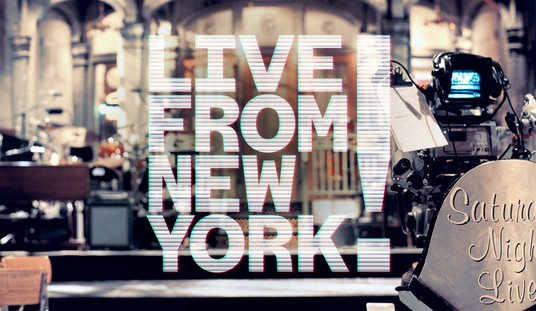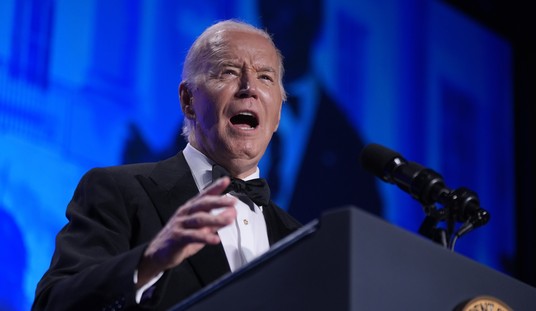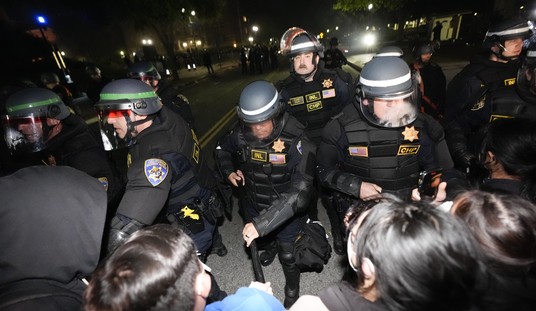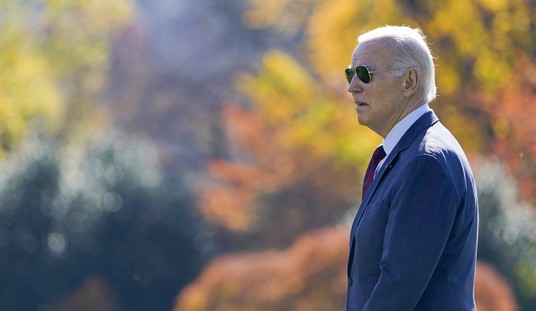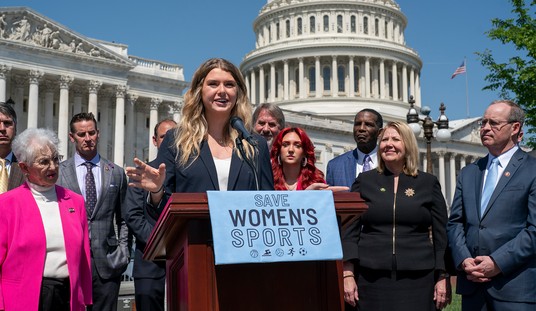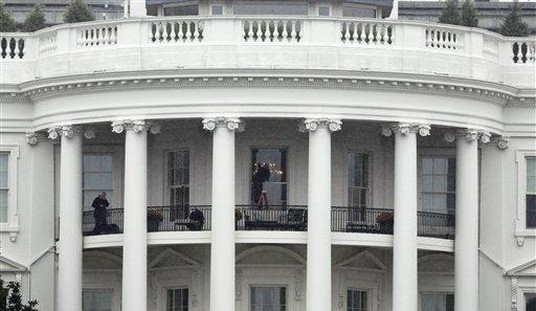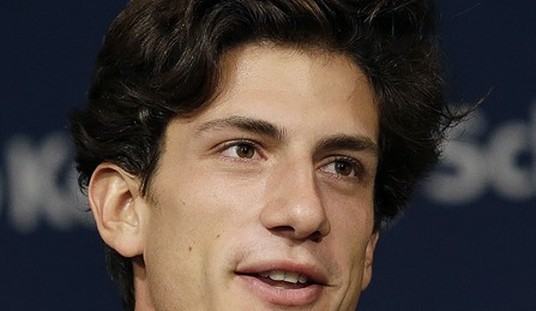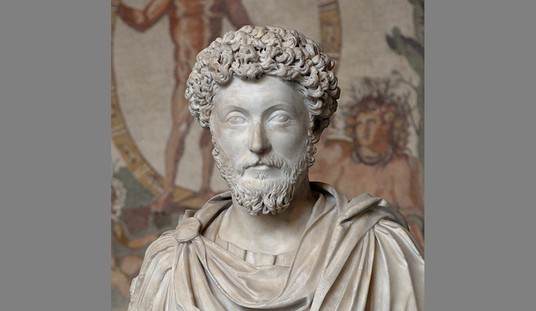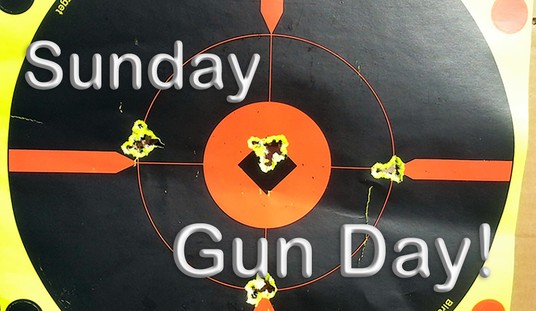Essential Listening
Readers may have seen the announcement this week at our sister site PJ Media that U.K. band Duran Duran is among the 11 bands nominated (actually, longlisted) for the 2022 class of the Rock And Roll Hall of Fame. So, it’s not a done deal — yet, my fellow Durannies.
And yeah, I’ve written about my love of all things Duran Duran and other denizens of the New Wave, and so-called “New Romantics,” era before at RedState. But stick with me.
Now, some might be under the impression that the New Romantics culture movement started with Duran Duran. But you’d be mistaken.
Besides, it started with a place and time, not a band. The place: Soho, London’s Billy’s club and Blitz nightclub and the “Blitz Kids” who went there, and a Birmingham clothing boutique, Kahn & Bell.
The time: post-punk late Seventies and early Eighties (up to about 1981).
A great primer on the New Romantics is the first part of a 2018 BBC documentary series, “Smashing Hits: The 80s Pop Map of Britain & Ireland.” The series focuses on where the decade’s music on the other side of the pond geographically came from (if you’re inclined to watch more of it, the series is available at the DailyMotion video site, too, if you want to avoid YouTube). I’ll come back to this episode later on, I promise.
So, how does the Blitz club play a part in all this?
One of those “Blitz Kids” was named Tony Hadley, and the singer’s band (Gary Kemp on guitar, synthesizer and backing vocals/songwriter; his brother Martin Kemp on bass, drummer John Keeble, and saxophonist Steve Norman) was called Spandau Ballet. They were the Blitz house band.
1977. Possibly the Hope and Anchor pub, Upper St in Islington. Thanks for this, Lee Hadley X@garyjkemp @TheTonyHadley @SteveNormanReal #themakers @SpandauBallet pic.twitter.com/abfC2m47qq
— Steve Norman (@SteveNormanReal) January 28, 2022
They’re featured in this now-quaint-looking, ’81 news segment, on what would follow the punk scene.
They were one of the first to break out in the UK. … which they’d done with this tune the previous year.
You might be able to get a glimpse the kernel of Spandau’s glossy image, with this demo version and this live show from 1981.
But more likely, this is the version of the band you know — from 1983, veterans by this point, with three albums under their belts:
You can catch Hadley playing at this U.K. festival in May 2022, alongside Boy George, Limahl (of Kajagoogoo), and others. And Norman shared info about recent gigs of his own band, The Sleevz, in both London and Birmingham.
But, back to the ’80s. There were a slew more New Romantic bands, also inspired by the music and style of 1970s glam and dance music of David Bowie, Roxy Music/Bryan Ferry, and Marc Bolan of T-Rex. Along with Boy George’s Culture Club and A Flock of Seagulls (whom you likely are very familiar with), here are just a few others.
Visage
Visage started in 1978, emerging from Blitz and fronted by singer Steve Strange. According to the band bio at Discogs:
Spearheading Blitz’s ultra-chic clientele were Steve Strange and DJ Rusty Egan, one time drummer with the Rich Kids. Seeking to record music of their own to fit in with the club’s regular playlist (a steady diet of David Bowie, Kraftwerk, and Roxy Music), Strange and Egan were offered studio time by another Rich Kids alum, guitarist Midge Ure
Some readers might recognize Ure as the singer of Ultravox (a band we’ll get to shortly).
The entry continues:
Adding Ultravox keyboardist Billy Currie as well as three members of Magazine — bassist Barry Adamson, guitarist John McGeoch, and keyboardist Dave Formula — Visage signed to Martin Rushent’s Genetic Records to release “Tar,” in September of 1979, followed a year later by their self-titled debut LP. The album yielded a major single in “Fade To Grey,” an instant club classic which heralded synth-pop’s imminent commercial breakthrough.
Here, with a ’81 video, is “Fade To Grey,” from their eponymous, ’80 debut LP for major label Polydor.
Visage broke up in ’85, but reformed (around Strange in the ’00s), ultimately releasing a final LP, Demons to Diamonds, in late 2015. However, Strange passed away in February ’15.
The Human League
Discogs tells us about the Human League, which formed in 1977:
Electronic band from Sheffield, England. Formed in 1977 by Martyn Ware and Ian Craig Marsh. Originally called ‘The Future‘, but changed their name to ‘The Human League’ in 1978 with the addition of vocalist Phil Oakey and the release of the single “Being Boiled”.
This original lineup lasted until 1980, after which Ware and Marsh left to form Heaven 17. Oakey kept the band name and added female vocalists, and it is this incarnation that gained widespread popularity.
…and, yes, the New Romantics movement’s new Fab Four…
Duran Duran
The band of the hour formed in Birmingham in 1978 at, as any good fan knows, the Rum Runner bar.
As Simon Le Bon sings to open “Planet Earth” from the band’s self-titled, debut LP,
“Only came outside to watch the night fall with the rain
I heard you making patterns rhyme
Like some new romantic looking for the TV sound,
You’ll see I’m right some other time”
Check out the total dedication here to the New Romantic look and synth-y goodness:
Three related bands that weren’t New Romantics, per se, but I think warrant a mention are:
Ultravox
Here’s a London band that predated punk rock, starting in 1973 as “Tigerlily” then changing it to Ultravox! (yes, with an exclamation point). At that time, their singer wasn’t Ure, but John Foxx. But that changed in 1979, with the dropping of the exclamation point but, more importantly, the addition of Midge at the mic and on guitar.
The Discogs entry continues:
This [Midge Ure, Billy Currie, Warren Cann, and Chris Cross] became the most successful and well-known, ‘classic’ 80s line-up. They recorded 10 (UK) Top Twenty singles and 7 (UK) Top Twenty Albums, among them single hits such as “Vienna,” “Hymn,” and “Dancing With Tears In My Eyes.”
I’m sure you’ll agree that Ure’s soaring voice is one of the treasures of the post-punk era, highlighted here in 1980’s “Vienna.” Luckily, he’s still out there gigging, too. I managed to hear him sing this next song a capella on a solo tour (opening for Howard Jones) in the ’90s.
Japan
Here's a photo I took of David Sylvian of Japan at Manchester Apollo in 1980 or so … #NewRomantic pic.twitter.com/mUI5ZdlPro
— Kevin Cummins (@KCMANC) October 16, 2019
No, you’re not seeing things. That’s singer David Sylvian, not Duran’s keyboardist, Nick Rhodes.
New wave, art rock, synth pop band, formed in London, England in early 1974.
Japan comprised David Sylvian (vocals), his brother Steve Jansen (drums), Richard Barbieri (keyboards) and Mick Karn (saxophone/bass). Rob (Robert) Dean joined the line-up as guitarist and the band subsequently won a recording contract with the German record company Ariola-Hansa. Eminently unfashionable in the UK punk era, they first found success in Japan.
After three albums with Ariola-Hansa, they switched to Virgin Records in 1980 and found their fortunes dramatically improving thanks to the surge of popularity in the New Romantic movement. Japan’s androgynous image made them suddenly fashionable and they registered several UK Top 20 singles.
From the album of the same name, here’s 1980’s “Gentlemen Take Polaroids.”
Adam & The Ants…
This band also wasn’t a part of the scene, but they were around the London kids. And I reckon you know them pretty well, if you read this far.
Let’s start with the unparalleled “Goody Two Shoes” and its brilliant chorus, from ’82:
“Don’t drink, don’t smoke – what do you do?
Don’t drink, don’t smoke – what do you do?
Subtle innuendos follow
There must be something inside”
One fun fact, though, about Adam & the Ants, before we close up: as the documentary I referenced above notes (from an interview with a member of the band, Marco Pirroni), the band was muddling around, getting almost no attention, until Pirroni, reached out to, of all people, Malcolm McLaren. The designer Vivienne Westwood, McLaren’s partner, had already been crucial in bringing the band together, by introducing Pirroni to Adam Ant at Sex, her infamous clothing shop in King’s Road, London.
The famed Sex Pistols impresario, Pirroni told the interviewers, directed him to look into African music and its percussion to base their record on.
And the rest is history.
Essential Listening verdict: The New Romantics definitely are essential to understanding the retro sounds that have been released since the 1990s and continue to come out today. They say everything old is new again, and it couldn’t be more true than about this movement.

